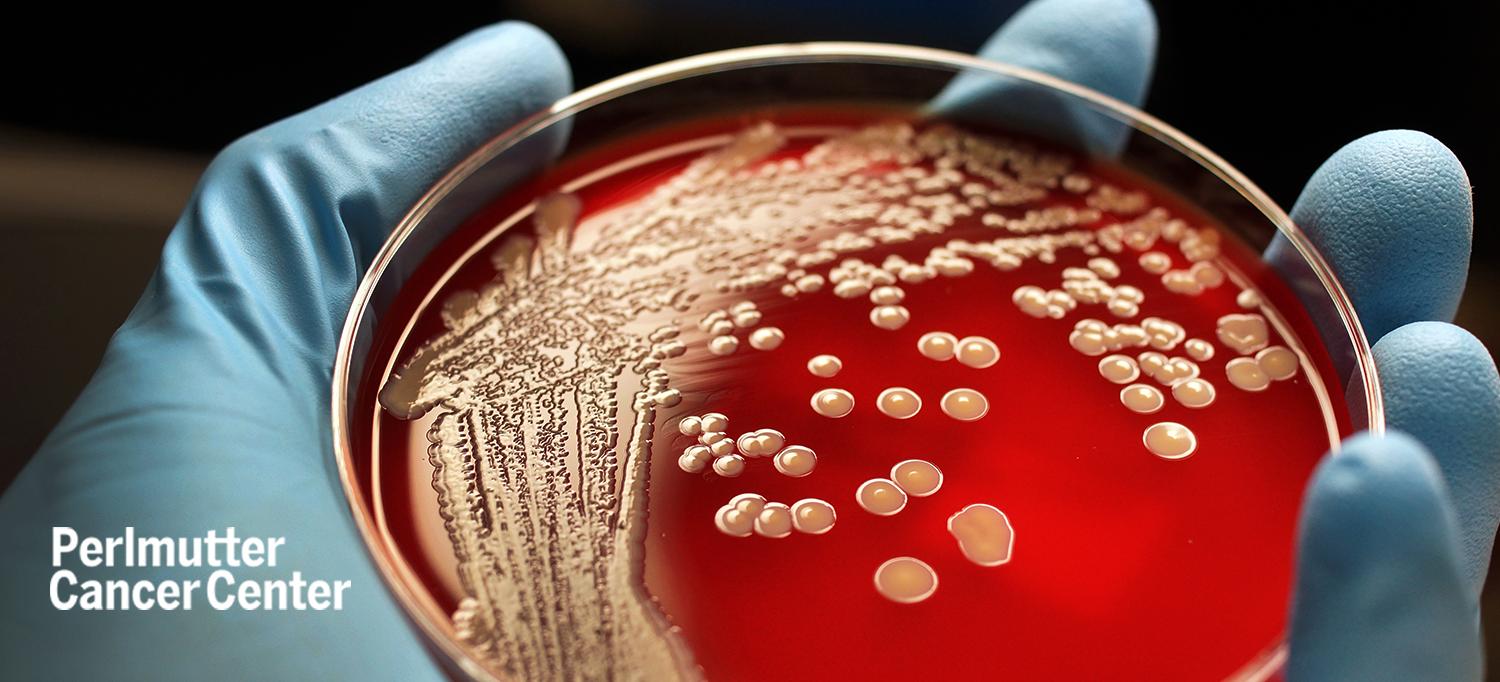
Photo: Rodolfo Parulan Jr/Getty
By revealing the structure of a protein used by bacteria to pump out antibiotics, a research team designed an early-stage therapeutic that sabotages the pump and restores the effectiveness of antibiotics.
Led by researchers from NYU, NYU Grossman School of Medicine, and NYU Langone’s Laura and Isaac Perlmutter Cancer Center, a new study used advanced microscopy to “see” for the first time the structure of NorA, a protein that the bacterial species Staphylococcus aureus uses to pump out widely used antibiotics before they can kill them.
Efflux pumps represent one mechanism by which S. aureus has evolved resistance to fluoroquinolones, a group of more than 60 approved antibiotics that includes norfloxacin (Noroxin), levofloxacin (Levaquin), and ciprofloxacin (Cipro). Fluoroquinolones are now ineffective against some drug-resistant bacterial strains, including methicillin-resistant S. aureus (MRSA), a major cause of death among hospitalized patients when infections become severe, the researchers say. For this reason, the field has sought to design efflux pump inhibitors (EPIs), but early attempts have been hindered by side effects.
“Instead of trying to find a new antibiotic, we hope to make the most widely used antibiotics over the last few decades, rendered ineffective by bacterial resistance, highly effective again,” says first study author Doug Brawley, PhD. He completed his doctoral thesis in the laboratories of senior authors Nathaniel J. Traaseth, PhD, a professor in the Department of Chemistry at NYU, and Da-Neng Wang, PhD, a professor in the Department of Cell Biology at NYU Grossman School of Medicine.
Antibodies to the Rescue
Published online March 31 in the journal Nature Chemical Biology, the study builds on advances in antibody technology development in recent years. Invading bacteria trigger the body’s immune system to make many slightly different antibodies, proteins shaped to attach to and neutralize specific invaders.
For the current study, the research team used antibodies to overcome a challenge that had kept the structure of NorA from being analyzed. Dr. Brawley worked for years to fine-tune the expression and purification conditions needed for this analysis, but the NorA molecule is compact and barely detectable even with advanced cryo–electron microscopy (cryo-EM).
As a solution, the researchers screened a large collection of synthetic antibodies—assembled by the lab of senior study author Shohei Koide, PhD, professor in the Department of Biochemistry and Molecular Pharmacology at NYU Grossman School of Medicine—to find the ones that attached most tightly to NorA. By attaching the antibodies to NorA, the team effectively doubled the size of the molecule, which enhanced the cryo-EM images and revealed the NorA pump’s structure for the first time.
The work also revealed the site where the team’s lead antibody docked into NorA, like a key into a lock. The team was surprised to find that the place where this antibody fit into NorA was the same place that NorA latches onto and removes antibiotics. These observations suggested that the antibody could block the pump, enable antibiotics to remain inside bacterial cells, and interfere with bacterial growth.
From the cryo-EM structure, the team also realized that the part of the antibody most deeply embedded in NorA’s binding cavity was a short, looping peptide, a segment of protein building blocks. “We became excited that an isolated peptide corresponding to the loop by itself might inhibit NorA,” says Dr. Traaseth. The team found that this peptide (termed NPI-1) functioned as an EPI and reduced antibiotic-resistant S. aureus growth in dishes with nutrients (cultures) by more than 95 percent at high concentrations when combined with the antibiotic norfloxacin.
The structural analysis also showed that the EPI had many interactions with protein building blocks in the structural pocket where NorA attaches to antibiotic molecules. “This makes it highly unlikely that bacteria could develop resistance to such a treatment because they would have to randomly evolve to somehow defeat the EPI without taking away the ability of the efflux pump site to grab antibiotics,” says Dr. Wang.
Moving forward, the team is working to improve the design of their EPI. Each residue of NPI-1 can be optimized for greater potency and to reduce any potential side effect, say the authors. Their strategy for developing synthetic antibodies to NorA-like efflux pumps may help to discover EPIs against other pathogens known to depend on pumps, which include Streptococcus pneumonia and Mycobacterium tuberculosis.
“The discovery of this new way to inhibit MRSA demonstrates that five labs from four departments—with complementary expertise in structural biology, protein engineering, peptide chemistry, and microbiology—can collaborate to accomplish what none could alone,” adds Dr. Koide.
Along with Dr. Brawley, Dr. Traaseth, Dr. Wang, and Dr. Koide, authors of the study were David Sauer and Jinmei Song of the Department of Cell Biology; Jianping Li, Ganesh Jedhe, Tiffany Suwatthee, and Paramjit Arora of the Department of Chemistry; Xuhui Zheng and Victor J. Torres in the Department of Microbiology; Akiko Koide in the Department of Medicine; and Zheng Liu in the Cryo–Electron Microscopy Laboratory.
This work was supported by National Institutes of Health grants R01AI165782, R01AI108889, R01NS108151, R01GM121994, R01DK099023, R01AI099394, R01AI105129, R01AI137336, R01AI140754, R21AI149350, R35GM130333, and T32-GM088118; National Science Foundation award MCB 1506420; American Cancer Society Postdoctoral Fellowship 129844-PF-17-135-01-TBE; and Department of Defense Horizon Award W81XWH-16-1-0153. The research team also acknowledges the investment by NYU Grossman School of Medicine in the Cryo–Electron Microscopy Laboratory, which was essential to the study’s finding.
NYU has filed a patent application on the antibodies described in this work. Dr. Koide holds equity in and receives consulting fees from Black Diamond Therapeutics and receives research funding from Puretech Health and Argenx BVBA. Dr. Torres is an inventor on patents and patent applications filed by NYU, which are currently under commercial license to Janssen Biotech Inc. These relationships are being managed in accordance with the policies of NYU Langone Health.
Media Inquiries
Greg Williams
Phone: 212-404-3500
gregory.williams@nyulangone.org

